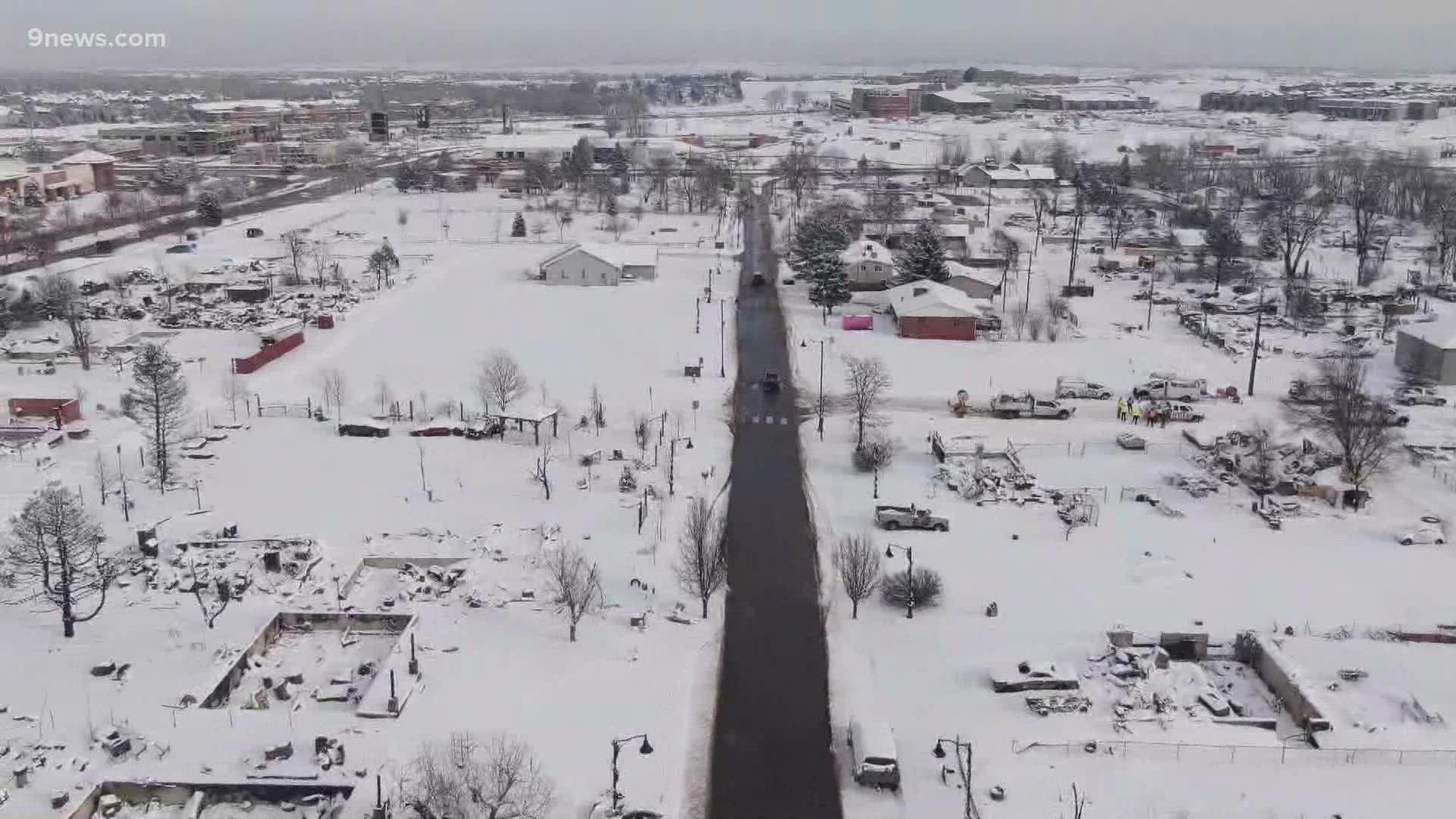BOULDER COUNTY, Colo. — As the flames of the Marshall Fire began to engulf her neighborhood, Tawnya Somauroo couldn't believe she didn't get a warning.
"The thing I just couldn't believe is that we were on our own, and we never got any kind of alert at all from emergency services," she said.
Somauroo is one of many people who have told 9NEWS they didn't get an emergency alert to evacuate.
"I've gotten other alerts for other emergencies on my phone, so I just assumed this would be like all the others," Somauroo said.
Boulder County had the ability to implement a more widespread, location-based emergency notification system for nearly two and a half years before the Marshall Fire, but it never got established.
Instead, the county relied on a system that requires anyone with a cell phone to opt in to receive alerts. The system, called Everbridge, automatically enrolls landlines through Century Link and VOIP phones from Xfinity or Comcast. It only reaches cell phones or emails if people sign up.
A lot of people affected by the fire have asked why Boulder County didn't use a cell phone emergency alert similar to the kind used for Amber Alerts.
Those alerts are sent through a system called Integrated Public Alert and Warning System, or IPAWS. This system, established by FEMA, allows local first responders to geo-target all cell phones in a specific area and send them messages with the alert siren.
Emergency management organizations have to apply to FEMA to use the system. Boulder County was approved to use IPAWS in August 2019, but hasn't been able to get it up and running.
Mike Chard, director of the Boulder Office of Emergency Management, said his office spent the rest of 2019 and early 2020 getting the IPAWS added to their existing emergency notification system and figuring out their next steps.
A series of disasters
Chard said his team shifted priorities when the pandemic started in early 2020. Then, in June 2020, there was a cyberattack on the City of Lafayette.
The emergency operations center was set up in the fall of 2020 to manage a COVID outbreak at CU. Then the Calwood and Lefthand Canyon fires burned in October. Chard said the heightened flash flooding risk in those burn areas led his team to develop a new flash flood early warning system.
In early 2021, the county was focused on vaccine distribution, followed by the shooting at the Table Mesa King Soopers.
Chard also said the entire emergency operations center had to be retooled to work in a virtual environment because of COVID. "Quarantines of personnel throughout the organization made getting all this done challenging," he said.
Chard said his team continued emergency planning work throughout 2020 and 2021 to set warning message templates, as well as pre-draw maps for wildfire evacuations in mountain areas and flash flood evacuations in burn areas.
Those maps did not help with evacuations during the Marshall Fire. A fact sheet from the Office of Emergency Management published a week after the fire said dispatchers were creating evacuation polygons as they went. "The location, wind speed and direction were unique to the emergency and all shapes were digitally created on the fly by dispatchers," the fact sheet said.
"You will not find a county along the Front Range or the State of Colorado that has had to deal with as many disasters over this period than Boulder," Chard wrote in an email. "Furthermore, as cited earlier, imagine having to re-design an EOC, develop new capabilities, build new alert and warning systems for flash flooding, and conduct capability training at the same time while developing and implementing an entirely new alert and warning system. To be where we are quite frankly is remarkable."
Chard said the county has planned a final training and orientation for the new system on March 3. The goal is to have it ready to roll in April.
"Despite this disaster, we are pushing hard to get this much-needed program completed," Chard wrote to 9NEWS.
It's too late for the Marshall Fire, but Somauroo hopes the new attention will help get more people prepared.
"This to me was a very close call for a lot of people that I love in my neighborhood," she said. "I just want us all to get out safe fast next time."
Warning sirens not used
Boulder County had another evacuation tool that went unused during the fire. The outdoor warning sirens set up all over the county were not used because the county didn't pick "wildfire" as one of the settings, according to the Office of Disaster Management.
The sirens use a tone and a recorded voice warning. The office said they can only set them to warn about six kinds of threats, and right now, they're set up for tornadoes, flooding, hazardous materials, severe weather and system tests. The sixth alert type is used to notify residents the threat is over.
The county said the sirens work best as an outdoor warning system, and may be hard to hear from indoors.
If you didn't receive an alert when you thought you should have, we want to hear from you. Send reporter Steve Staeger a note at steve@9news.com.
SUGGESTED VIDEOS: Wildfires in Colorado

